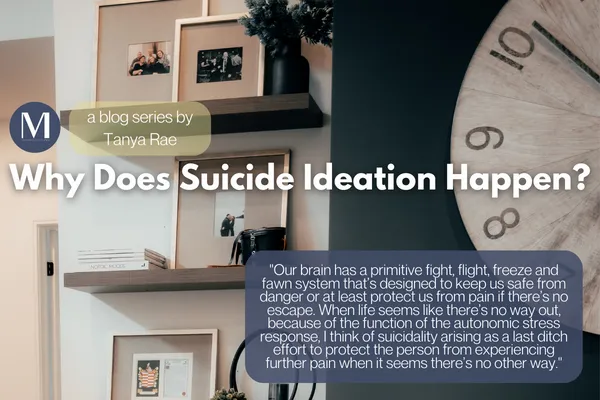the blog
A place for our team to share about topics they are passionate about, in hopes of allowing you to see and understand a bit more behind the faces on these pages.

Why Do Suicidal Ideations Happen?
Before we begin, a trigger warning: These posts focus on suicidality. If this is a sensitive topic for you, prioritize self-care and skip these. Upcoming posts will cover different topics.
In part one of this series, I introduced suicidality as a “normal” process that exists to serve the protective function of relieving the bodily system from ongoing and/or intense pain - hopelessness and helplessness.
Now, let's delve into why suicidal ideation occurs.
Our brain has a primitive fight, flight, freeze and fawn system that’s designed to keep us safe from danger or at least protect us from pain if there’s no escape. This takes place in a deeper part of the brain called the limbic system and is known as the stress response. It’s the system you see at play when a rabbit is met with a fox. The rabbit may run (flight), try to scratch (fight), or it may become immobile (freeze). Fawn is an additional response we use to keep ourselves safe from the harm of the unwanted behaviour of another by attempting to please or appease them. For humans, this same system can kick in if we encounter a bear in the woods, experience abuse, have a fight with our spouse, when under stress at work, etc. In order to do its job, this system doesn’t take time to think things through and consider alternative options. Instead it’s very reactive and works extremely quickly (read more about this in my series on the autonomic nervous system). I think this is partially why suicidal ideation can be so scary. It can sometimes seem to just pop up out of nowhere. When life seems like there’s no way out, because of the function of the autonomic stress response, I think of suicidality arising as a last-ditch effort to protect the person from experiencing further pain when it seems there’s no other way. Thankfully, we have the frontal lobe area of the brain, which is involved in thinking and reasoning.
In therapy, clients and therapists work together to understand what’s happening, while also plan ahead to ensure alternative thoughts and behaviours are accessible when wrestling with suicidality in the future. They begin to engage this and other parts of the brain. The desired outcome is that the client eventually begins to see the suicide response as a naturally occuring, timelimited, protective mechanism. As a result, they feel less shameful, alone, or without options. Ultimately, the goal is to help the client to begin to see and build a different way through these difficult periods and begin to build the life they desire to live.
Til next time,
Tanya Rae
Office Location: 1200 Brock Street South, Whitby, ON. L1N 4L9
© Marquis Counselling & Consulting | ALL RIGHTS RESERVED | TERMS & CONDITIONS | PRIVACY POLICY
